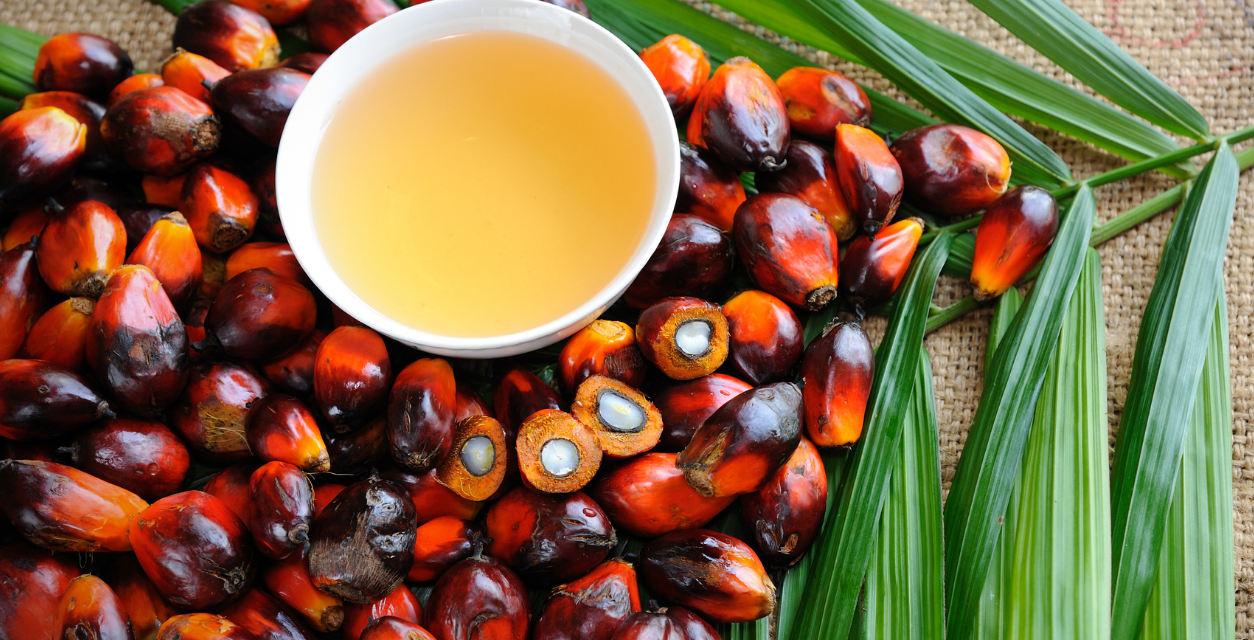It’s January, so maybe you’re looking at making 2022 a little healthier than 2021! If so, that means you’re probably reading those Nutrient Facts labels more carefully. You’ve probably also noticed: palm oil is back! In the 80’s, coconut and palm oil were both shunned in the health community due to their high saturated fat content. Coconut oil has made a popular comeback, thanks to keto and paleo diets and palm oil is showing up in an increasing number of products. (I’ll discuss coconut oil in February.)
Palm oil is actually the most widely used plant-based saturated fat in the world. Its major fatty acid is palmitic acid, which has been shown to increase the risk of heart disease compared to a diet with more polyunsaturated or monounsaturated fat. (All fats are a combination of fatty acids, and it is the percentage of specific types of fatty acid that generally determine how it affects cholesterol levels and thus cardiovascular disease risk.)
Large ongoing studies of health professionals (the Nurses’ Health Study of 73,000 women and the Health Professionals Follow-Up Study of 42,000 men.) found that the lowest risk of heart disease resulted when palmitic acid (the primary fatty acid in palm oil) was hypothetically replaced with a less saturated fat; the risk of heart disease actually decreased by 10-12%. This study concluded that “ …increased use of palm oil in food production, especially in developing countries, and higher palmitic acid contents in snacks and bakery products over the past years might lead to adverse consequences.” It’s important to note that the studies mentioned above adjust for risk factors such as smoking, alcohol, family history, menopausal status, physical activity and more. Another recent study found that replacement of polyunsaturated fat with palm oil did increase LDL cholesterol and to a lesser extent, HDL cholesterol. Because palm oil also improves HDL, it decreases the overall negative effect.
The bottom line:
The tropical oils like palm and coconut oil, even though they’re plant-based, are not the healthiest options, so you should definitely not try to eat more of them. It’s best to think of them like the saturated fat found in animal-based foods like high-fat meats, poultry, sausage, bacon and full-fat dairy products. Most importantly, you want to look at your total saturated fat intake over time. If you eat fast or convenience food, chances are most of the that’s where most of your saturated fat in your diet comes from.
Environmental Impact: Something Else to Consider
As a population, we also need to consider the impact of our food choices on the environment. According to the Center for International Forestry Research based in Indonesia, palm oil accounts for about 40% of the current global demand for vegetable oil used for food, animal feed and food. Palm oil production has expanded in the forested regions of Borneo, Sumatra and the Malay Peninsula and has led to concern about tropical deforestation. The organization reports that “deforestation varies from 3% in West Africa, to 50% in Malaysian Borneo. Documented negative environmental impacts from such expansion include biodiversity declines, greenhouse gas emissions and air pollution.”
I’ll be the first to admit: it’s difficult to be a health conscious as well as an environmentally conscious consumer. The best we can do is educate ourselves about health vs. economical vs. environmental tradeoffs and try to make the best choice possible.
In February, I’ll discuss coconut oil and choosing the best spread for your toast!













